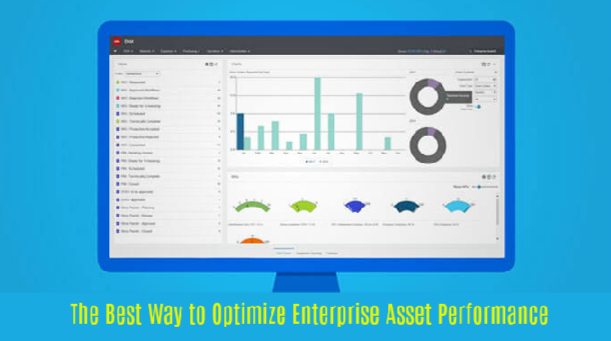The Best Way to Optimize Enterprise Asset Performance
If you’ve been keeping up to date with the industry online and through social networking sites, you’ve probably already heard of enterprise asset management (EAM). The idea is to place greater emphasis on managing the entire lifecycle of an enterprise’s physical assets, covering everything from vehicles and machinery to 3D printers and multimedia devices.
That’s why companies like Andromeda Systems Incorporated have experienced rapid growth over the last couple of years. After all, EAM allows companies to save time and money, improve quality and efficiency, and create safer working environments. It can pay for itself, and that’s true even if you’re working with an outside agency to make it happen.
Enterprise Asset Management is typically used by large companies in industries that use extensive physical hardware. When used correctly, it can help to throw up alerts before parts fail or even to automate the supply chain and order parts and replacements ahead of time.


How EAM Software Makes Your Life Easier:
It’s possible to manage assets through software like Microsoft Excel, but we wouldn’t recommend it. Instead, it’s almost always a good idea to use something bespoke like OptiAM, because custom-built EAM software helps to boost compliance amongst employees and to make sure that all of your data is up-to-date at any given time.
Another big benefit to using EAM software is that all of the data can be analyzed, with different software providers including different analytical features. A good EAM system will store data on every asset including its characteristics and its service and usage history. This can be particularly useful for assets that require designing and construction, as well as for those that need regular checks and repairs to make sure that they’re still compliant.
All EAM software is different, but there are still some similarities that hold as a general rule. For example, it’ll typically tie in with your supply chain management, inventory management, materials management, and procurement systems. It’s also not uncommon for EAM software to offer up predictive and preventative analytics, and this is really how the software can pay for itself.
Getting started with EAM Software:
Back in the early days of the industry, most EAM software relied on manual data entry from users to make sure that it was up-to-date. These days, though, much of that information is gathered automatically, which can help to boost the reliability of the systems and to make them much more effective when you need to use them.
In fact, one of the big trends in the EAM market at the moment is the push for greater automation thanks to tools like artificial intelligence, machine learning, and natural language processing. The idea is that these tools can take on some of the work and boost the overall compliance of the company by standardizing asset definitions and ensuring the integrity of your data.
There’s no shortage of EAM software out on the market, and there are all sorts of options when it comes to managing your business as a whole. That’s why, when you’re looking for a provider, you should get to know as much about their software as you can, including whether it can be integrated with your CRM or with any other software that you might be running.
You can refer to Business Asset management software Australia!
Knowledge is Power:
When it comes to managing your assets, knowledge is power. The more that you know about which assets you own and what their status is, the more you can reduce wastage and improve the performance of your company. And remember, the worse that those inefficiencies are, the more you stand to save by addressing them.
There are other benefits to the insights you’ll receive from enterprise asset management software, too. For example, it can improve the structure of your assets and the data that they create, it can allow you to better automate key processes, it offers powerful reporting and analytical functions and it offers up a centralized portal for all of your asset data.
And as for downsides…well, there aren’t any. Sure, good EAM software doesn’t come cheap, but it does pay for itself over time and you can look at it as an investment. And while it can take some time to train staff and to encourage them to use it, the software itself is getting more and more intuitive as time goes on and machine learning functionality can often fill in the gaps.
Ultimately, using EAM software is a no-brainer because the benefits far outweigh the cons. The only real question is which software you’ll decide to use yourself and how the insights that you unlock will affect your bottom line. Good luck.

No comments